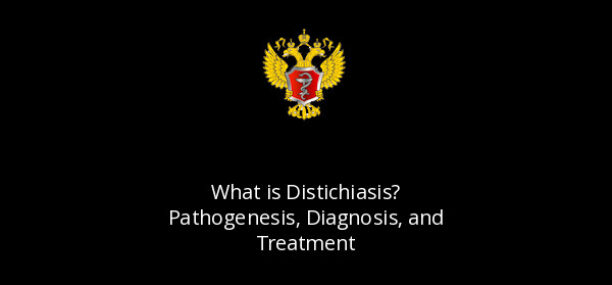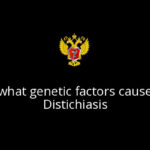Abstract
Distichiasis is a condition characterized by the abnormal growth of extra eyelashes, which can lead to ocular irritation and damage. Diagnosis involves a thorough eye examination, and treatment options range from conservative measures to surgical intervention, depending on the severity of the condition
What is Distichiasis?
Distichiasis is a medical condition characterized by the abnormal growth of extra eyelashes from the Meibomian gland orifices, located along the eyelid margin. These additional lashes can irritate the eye’s surface, leading to discomfort and potential damage.
Distichiasis can lead to various ocular symptoms and complications, including irritation, redness, tearing, and corneal abrasions, necessitating medical evaluation and management. Recognizing the prevalence of distichiasis is essential for healthcare professionals to provide timely diagnosis, treatment, and ongoing monitoring for affected individuals, thereby improving ocular health outcomes and quality of life.
The pathogenesis of distichiasis is not completely understood, but it is believed to be a genetic disorder that is inherited in an autosomal dominant manner. It may occur due to developmental abnormalities during embryogenesis, leading to the misplacement of eyelashes.
Distichiasis is estimated to occur in approximately 1 in 10,000 individuals.
Causative Factors and Underlying Conditions: While distichiasis can occur sporadically, it may also be associated with certain underlying conditions, including:
- Genetic Factors: Distichiasis can have a hereditary component, with mutations in certain genes being implicated in its development.
- Congenital Abnormalities: Some cases may be associated with congenital abnormalities or syndromes, such as lymphedema-distichiasis syndrome.
- Inflammatory Conditions: Chronic inflammation of the eyelid margin, such as in blepharitis or chronic conjunctivitis, may predispose individuals to distichiasis.
Early symptoms of distichiasis may include tearing, redness, and discomfort in the eye, as well as foreign body sensation and increased sensitivity to light. If left untreated, distichiasis can lead to corneal ulcers, scarring, and even blindness.
Specific Symptoms:
- Irritation: Patients may experience irritation, itching, or a foreign body sensation due to the abnormal eyelashes rubbing against the cornea or conjunctiva.
- Tearing: Excessive tearing (epiphora) can occur as a result of ocular irritation.
- Corneal Damage: In severe cases, distichiasis can lead to corneal abrasions, ulcers, or scarring.
Non-specific Symptoms:
- Redness: The eye may appear red due to irritation and inflammation.
- Swelling: Eyelid swelling (edema) may occur, especially if there is associated inflammation.
Diagnosis:
Diagnosis is typically made through a comprehensive eye examination, which may include the use of specialized equipment such as a slit lamp.
Diagnosis of distichiasis typically involves a comprehensive eye examination by an ophthalmologist or optometrist. Key diagnostic steps include:
- External Examination: Observation of the eyelid margin for abnormal eyelash growth.
- Slit-lamp Examination: Detailed examination of the cornea, conjunctiva, and eyelid margin under magnification.
- Fluorescein Staining: Assessing the cornea for signs of damage, such as abrasions or ulcers.
Treatment Options: Treatment of distichiasis aims to alleviate symptoms and prevent ocular damage. Options include:
- Conservative Measures: Lubricating eye drops or ointments may help soothe ocular irritation.
- Mechanical Epilation: Removing abnormal eyelashes using forceps or electrolysis can provide temporary relief.
- Cryotherapy: Freezing the Meibomian gland orifices to destroy abnormal follicles may be considered in some cases.
- Surgery: Surgical interventions, such as eyelid margin reconstruction or partial-thickness eyelid excision, may be necessary for severe or recurrent cases.
Treatment options for distichiasis include manual plucking of the extra eyelashes, cryotherapy, electroepilation, and surgical excision of the affected glands. In addition to medical treatments, some natural remedies such as applying warm compresses to the affected area or using tea tree oil may provide some relief.
In severe cases, drugs such as topical corticosteroids may be prescribed to reduce inflammation and discomfort.
Life modifications such as avoiding rubbing the eyes and wearing protective eyewear may also be helpful in managing symptoms and preventing further damage to the eyes.
Verified by: Dr.Diab (March 28, 2024)
Citation: Dr.Diab. (March 28, 2024). What is Distichiasis? Pathogenesis, Diagnosis, and Treatment. Medcoi Journal of Medicine, 6(2). urn:medcoi:article21031.














There are no comments yet
Or use one of these social networks